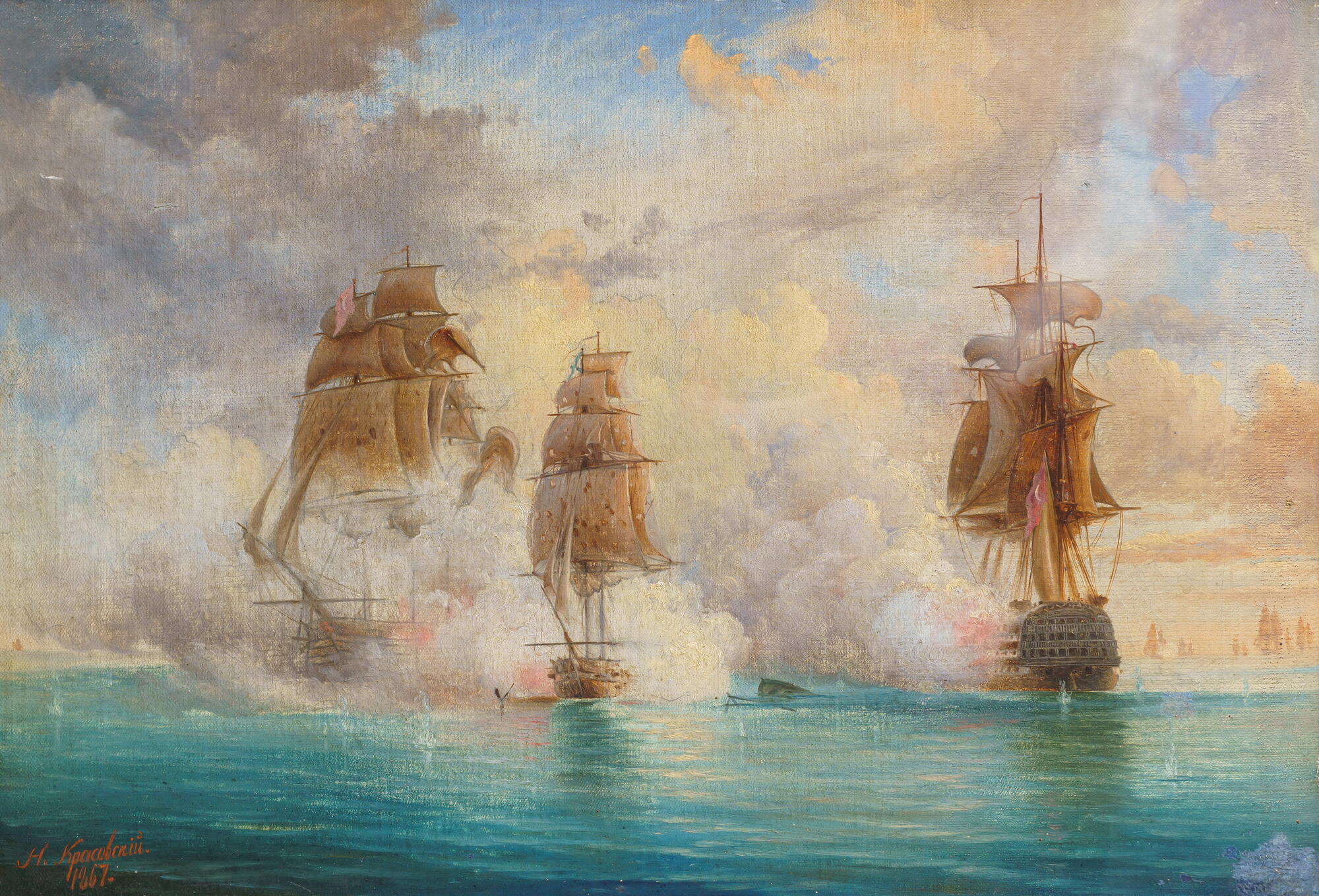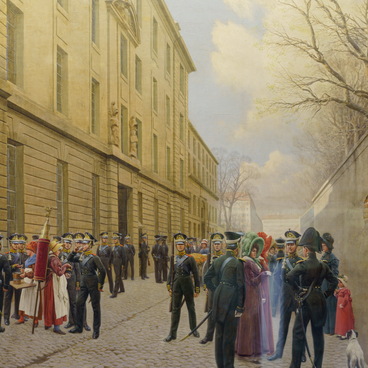When Russia intervened to help Greece in its War of Independence against the Ottoman Empire, the relationship between Russia and the Ottoman Empire became strained. On April 14, 1828, the Russian government declared war on the Ottoman Empire.
On May 12, 1829, a detachment of ships that included the “Standart” frigate and the “Orpheus” and “Mercury” brigs approached the Strait of Bosporus to observe the actions of the enemy’s fleet. The “Mercury” brig was overtaken by two Turkish ships — the 110-gun “Selimiye” and the 74-gun “Real-bei”. The wind quieted down and helped the brig stay out of the enemy’s range of fire for some time and even to get further away from enemy ships. At first, the brig succeeded in doing that, but the wind picked up again and helped the Turkish ships who caught up with the brig and tried to overtake it from the port or starboard side. Lieutenant commander Alexander Ivanovich Kazarsky gathered his officers for a military council where a decision was made to accept battle, and in case of potential capture of the vessel — to blow it up. The crew unanimously supported this plan.
The exceptionally skillful maneuvering of Kazarsky who used both sails and paddles prevented the enemy from making use of its tenfold advantage in the number of artillery pieces. Half an hour later, both Turkish ships managed to fire twice on the Russian brig, and someone shouted from their ships in Russian, “Give up, take in the sails!” In response, Russian sailors roared “Hooray!” and opened fire, using all of their guns and cannons. The Turks continued firing out of all their weapons, and soon “Mercury” was completely beat up, with its sails torn, and water entering the cargo hold through underwater damage. The brig caught fire on three occasions, but the fire was extinguished every time. The situation was critical, but the crew continued fighting. With highly accurate fire, its cannoneers managed to break several of the enemy’s main sails, and “Selimiye” and “Real-bei” lay to.
The battle lasted four hours. The brig’s commander Kazarsky not only prevented the enemy from utilizing the advantage of having ten times as many pieces of artillery but also inflicted serious damage on the sails, mast, and spars of enemy ships. On May 30, 1829, the “Mercury” brig headed to Sevastopol for repairs. The heroic feat of the brig inspired not only admiration in Russia but also the respect of the enemy.
By decree of July 28, 1829, Emperor Nicholas I awarded the “Mercury” brig with the St. George Flag. To celebrate the heroic feet, it was decided to build a new ship titled “In Memory of Mercury” after the brig would become unfit for use, and to always have a ship with this title in the Russian fleet.
On May 12, 1829, a detachment of ships that included the “Standart” frigate and the “Orpheus” and “Mercury” brigs approached the Strait of Bosporus to observe the actions of the enemy’s fleet. The “Mercury” brig was overtaken by two Turkish ships — the 110-gun “Selimiye” and the 74-gun “Real-bei”. The wind quieted down and helped the brig stay out of the enemy’s range of fire for some time and even to get further away from enemy ships. At first, the brig succeeded in doing that, but the wind picked up again and helped the Turkish ships who caught up with the brig and tried to overtake it from the port or starboard side. Lieutenant commander Alexander Ivanovich Kazarsky gathered his officers for a military council where a decision was made to accept battle, and in case of potential capture of the vessel — to blow it up. The crew unanimously supported this plan.
The exceptionally skillful maneuvering of Kazarsky who used both sails and paddles prevented the enemy from making use of its tenfold advantage in the number of artillery pieces. Half an hour later, both Turkish ships managed to fire twice on the Russian brig, and someone shouted from their ships in Russian, “Give up, take in the sails!” In response, Russian sailors roared “Hooray!” and opened fire, using all of their guns and cannons. The Turks continued firing out of all their weapons, and soon “Mercury” was completely beat up, with its sails torn, and water entering the cargo hold through underwater damage. The brig caught fire on three occasions, but the fire was extinguished every time. The situation was critical, but the crew continued fighting. With highly accurate fire, its cannoneers managed to break several of the enemy’s main sails, and “Selimiye” and “Real-bei” lay to.
The battle lasted four hours. The brig’s commander Kazarsky not only prevented the enemy from utilizing the advantage of having ten times as many pieces of artillery but also inflicted serious damage on the sails, mast, and spars of enemy ships. On May 30, 1829, the “Mercury” brig headed to Sevastopol for repairs. The heroic feat of the brig inspired not only admiration in Russia but also the respect of the enemy.
By decree of July 28, 1829, Emperor Nicholas I awarded the “Mercury” brig with the St. George Flag. To celebrate the heroic feet, it was decided to build a new ship titled “In Memory of Mercury” after the brig would become unfit for use, and to always have a ship with this title in the Russian fleet.


